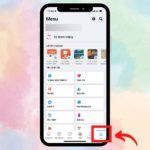In the current technology boom era, businesses can reach customers through media channels. Among them, push notifications are an effective form of advertising through applications on phones. So specifically, what are push notifications? When should they be used?
What are push notifications?
Push notification service is the technology of sending messages to users. Alerts or notifications can be displayed on your phone. These are communication signals sent by application servers.
The server initiates push notifications to inform users about offers, upcoming events in the application, or other information that you may be interested in. Push notifications on phones are quite popular, there are also push notifications on websites, push notifications for wearable devices like smartwatches, and push notifications through voice.
/fptshop.com.vn/uploads/images/tin-tuc/172433/Originals/thong-bao-day-la-gi-muc-dich-su-dung-dich-vu-nay-la-gi-va-khi-nao-nen-su-dung%201.jpg)
Benefits of push notifications
After grasping the concept of what push notifications are, do you know the benefits of these notifications? In recent years, push notification services have become popular on mobile applications. In 2009, Apple released the first version of Apple Push Notification (APN) service for iOS. This allows businesses and organizations to send notifications to customers without the need for users to open the application. Google also launched push notification service for Android in 2012. Here are some benefits of push notifications.
Increased interaction
Push notifications effectively attract users. You can use push notifications to send information related to the use of your application or provide features, promotions. Many studies have shown that push notifications have a higher open rate than SMS, email, or chat applications.
/fptshop.com.vn/uploads/images/tin-tuc/172433/Originals/thong-bao-day-la-gi-muc-dich-su-dung-dich-vu-nay-la-gi-va-khi-nao-nen-su-dung%204.jpg)
Retaining users
Push notifications allow you to create messages that are more relevant to your customers. For example, you can rely on the behavior, location, preferences of customer groups to provide relevant information, promotions. This increases the ability to retain customers and increase revenue.
User control
Users may prefer push notifications over other forms of communication because they can control them. Users can choose to receive or reject push notifications anytime they want.
More information: An easy way to change notification settings on Bing AI
When to use push notifications?
After understanding the benefits and what push notifications are, you need to know when to use them. Here are some of the most common ways that businesses often apply.
Marketing campaigns
Push notifications are often used in marketing campaigns. Detailed information about promotions, discounts, new product launches, and other important updates will be sent directly to customers’ phones. Push notifications are an effective way to promote campaigns and encourage users to take action.
A successful push notification campaign can bring customers back in the future.
/fptshop.com.vn/uploads/images/tin-tuc/172433/Originals/thong-bao-day-la-gi-muc-dich-su-dung-dich-vu-nay-la-gi-va-khi-nao-nen-su-dung%203.jpg)
Transaction notifications
Push notifications can notify users about transactions such as financial activities in their accounts. For example, a bank uses push notifications to inform customers about deposits, withdrawals, balance updates, and other changes to their accounts.
Push notifications help customers keep track of their financial situation and detect suspicious activity. You can also use push notifications to send customers payment reminders and notifications about upcoming transactions.
One-time password (OTP) delivery
Push notifications can deliver one-time passwords (OTPs) used to authenticate user accounts. For example, you can send an OTP to a customer’s mobile device when they log in or make a purchase.
Afterwards, the customer enters the OTP and completes the action, you can verify the user’s identity without storing any sensitive information. In general, OTP is an aspect of multi-factor authentication (MFA).
Emergency alerts
Government agencies can use push notifications to issue emergency alerts to the public. This can be alerts about natural disasters, emergencies, terrorist threats, severe weather warnings,…
Healthcare services
Push notifications can send healthcare information to users, such as appointment updates, medication reminders, and test results. In addition, push notifications can remind patients to take medication or schedule follow-up appointments.
Shipping updates
Retailers or suppliers can send push notifications to inform customers about the status of their orders. You can notify customers of changes in the shipping status of their orders, such as when the order has been shipped and completed. Push notifications also allow customers to track the shipping journey and estimated delivery time.
Customer feedback
Push notifications can remind customers to provide feedback on products or services. With push notifications, you can ask customers to rate their experience and leave reviews on products and services. Additionally, you can use push notifications to conduct surveys and collect detailed information about customer preferences and opinions.
/fptshop.com.vn/uploads/images/tin-tuc/172433/Originals/thong-bao-day-la-gi-muc-dich-su-dung-dich-vu-nay-la-gi-va-khi-nao-nen-su-dung%205.jpg)
Social media
If you are using social media, send push notifications to users about new posts, comments, new content, allowing them to quickly access and interact with the latest news without having to manually check.
What types of push notifications are there?
There are two main types of push notifications.
- A2P: A2P push notifications are sent by an application or service to individual users. Examples are alert messages, advertising messages, and transaction messages.
- P2P: P2P push notifications are sent directly from one user to another, usually to notify the recipient of an event or activity. These push notifications include chat messages, friend requests, reminders, and location updates.
How do push notifications work?
To use push notifications, you need a notification sender, notification recipient, and services to link the relationship between these 3 parties as follows:
- The sender uses the application server to send notifications to customers.
- The recipient receives notifications by logging in through the device.
- The push notification service links the sender to the recipient.
If you want to use push notifications, follow these steps:
Register for push notification service
You need to connect to the push notification service with the platform you want to target. For example, your application needs to be designed to connect to Apple’s Apple Push Notification (APN) service for iOS users or Firebase Cloud Messaging (FCM) to target Android users. You can register your application with the push notification service and access the service’s API.
Handle service tokens
The push notification service maintains connections with each registered application and related mobile devices. Once your application and mobile devices are registered, the push notification service returns device tokens. You can use these tokens to send notifications to customers.
Start sending notifications
The application server sends notification content and device tokens to the push notification service’s API. When the server sends a request to the push notification service, the service will send notifications to customers’ devices.
The notification appears on the lock screen, notification center, or application icon on the phone. Customers can click on the notification to access your application or website.
/fptshop.com.vn/uploads/images/tin-tuc/172433/Originals/thong-bao-day-la-gi-muc-dich-su-dung-dich-vu-nay-la-gi-va-khi-nao-nen-su-dung%202.jpg)
Conclusion
FPT Shophas shared information about what push notifications are and when to use them. If you are a business or individual looking to increase access to your target customers, you can use this service.
- Annoyed by push notifications on Pure Tuber? Here’s a quick solution
- How to disable Facebook group notifications on phones and computers




































